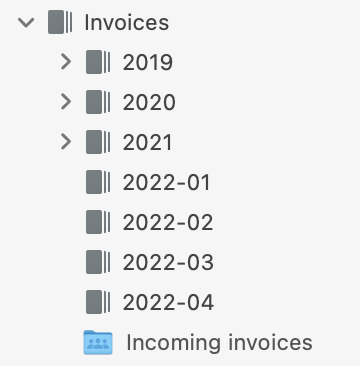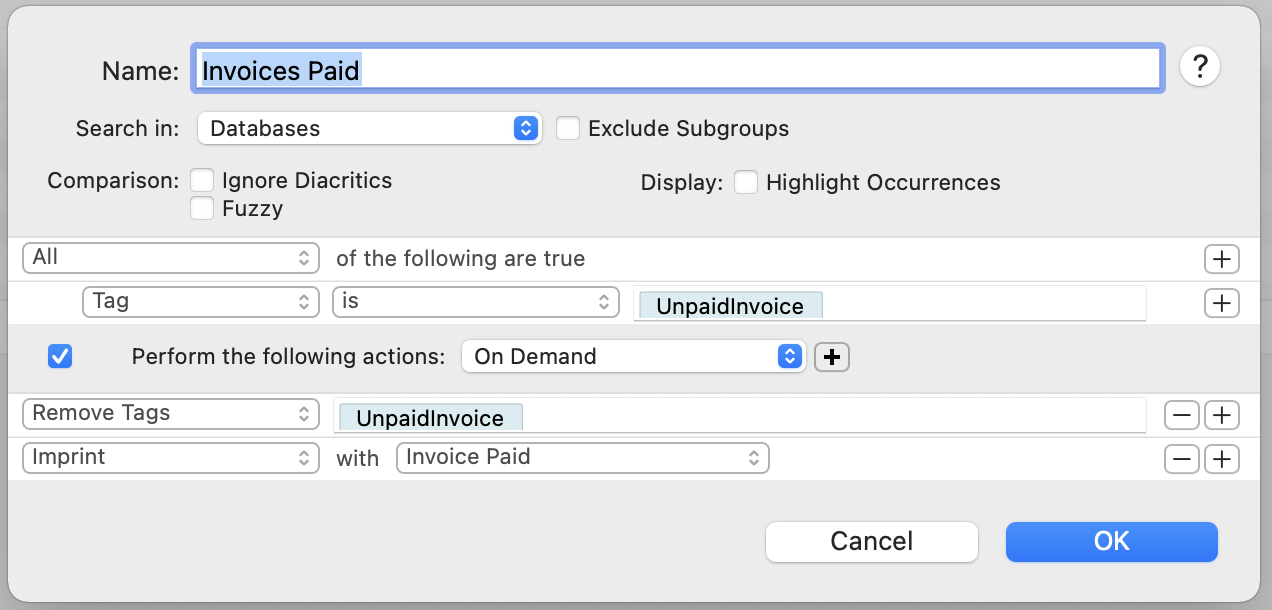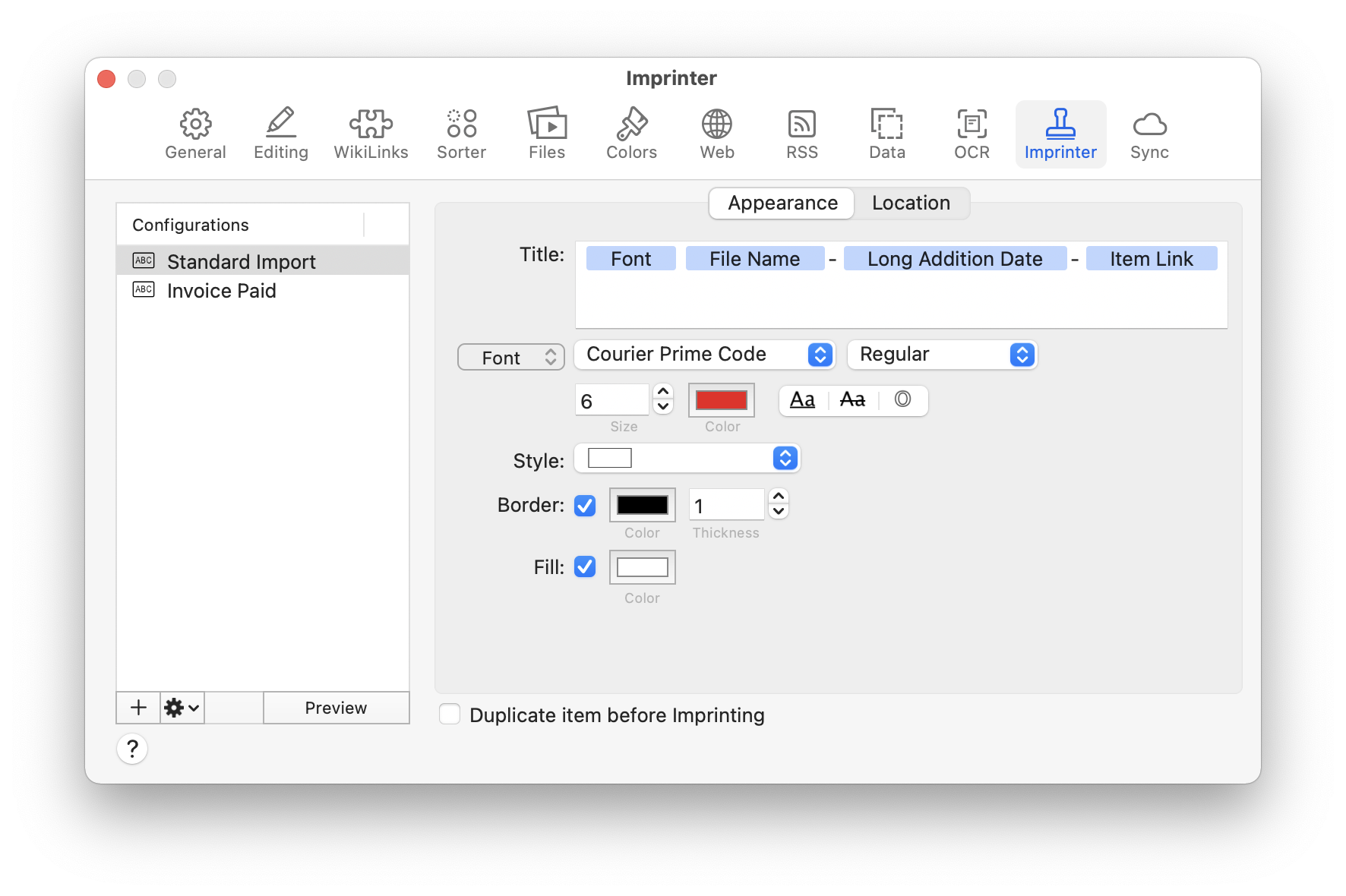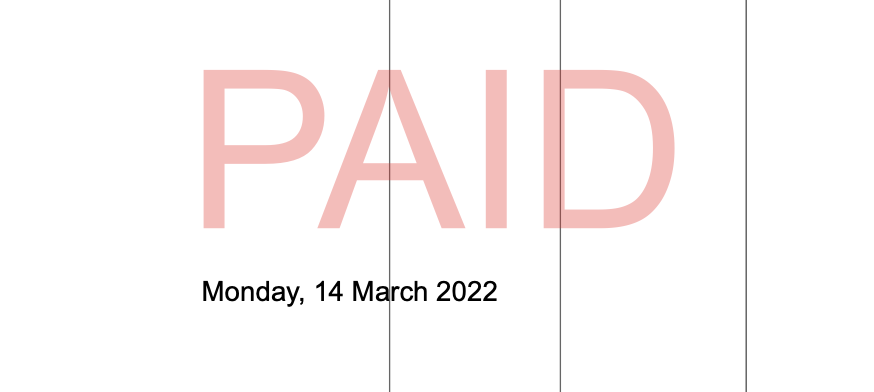For several years, DEVONthink has gradually gotten into my app stack. Initially, I think I struggled with what to store in it, how to organize my databases, and so on. When I started thinking about it as a file manager and a way to manage all my files, it became more manageable, and I started building some workflows on top of the base functionality. One of those use cases is how I manage invoices, and that is what I want to describe in this post.
Even though most of my paperwork is digital these days, not everything goes directly into the bank and can be quickly approved for payment. I pay all my invoices monthly, at the end of the month. When that time comes, I need to gather the invoices I need to pay from primarily three different sources:
- The ones sent electronically, directly to my bank. These I pretty much only need to approve, and they are done.
- The ones sent electronically, but as PDFs via e-mail or personal digital inbox1. With these, I typically open them on the screen and use the mobile bank app on my phone to scan the details required (destination, reference number, and invoice amount).
- Paper invoices sent as letters through the old-school mail. For these, I apply the same process as with number 2 above, but to be able to do it from anywhere (without physical access to these documents), I scan them as PDF files.
Given this information, I have a shortlist of requirements that my invoice management solution must fulfill:
- Easy capture of PDF files (I need to gather the files from categories 2 & 3) for both myself and my wife.
- Easy to scan paper invoices to PDF format (specifically for category 3)
- Organized monthly by the date I receive them so that I can easily find the invoices for a given month
- Keeping a status: is the invoice paid or not?
- If it is paid already, it should be marked, and the date of payment should be recorded
Until I implemented the DEVONthink workflow I’m about to describe, I have used various manual or semi-automatic solutions such as: just keeping a file of unpaid invoices in my home office scanning and tagging in Evernote a Dropbox folder. It never worked very well, and there were several manual and sometimes cumbersome steps.
The Workflow
To solve the two first requirements with one app, I decided to go for a shared Dropbox folder to gather the incoming invoices. My wife and I have free, personal Dropbox accounts for smaller projects like this. In addition, Dropbox has a pretty good document scanner feature built-in. With this shared folder in place, invoices can be uploaded and automatically handled.
The next thing to tackle was how to get the files from the Incoming invoices folder into DEVONthink and organized by month. Initially, I thought of using Folder Actions, but even though solving the problem for me, I found that handling it inside DEVONthink with Smart Rules was a more flexible solution for me. I created a group called Invoices, and inside this group, I added the Incoming invoices as an indexed folder:

Then I created the Import Invoice smart rule with the following configuration:

Essentially, when DEVONthink finds a PDF file in the Incoming Invoices folder, it will:
- Move the PDF from the Dropbox folder into my database
- Add the tag
UnpaidInvoice - Imprint the PDF with a stamp (see further down for details)
- Move the PDF to the Invoices group
- File it into a sub-group with the format Year-Date (based on the file creation date); and lastly
- Show a notification that the file was imported
With this in place, when it’s time for me to pay the monthly invoices, I can go to one location and have all the invoices neatly organized with a tag to indicate the status. After paying an invoice, I simply removed the UnpaidInvoice tag, and by the end of the year, I grouped all the sub-groups (Year-Date) into one group for the year.
I used this setup for quite a while until I realized that I didn’t want to manually remove the tag after paying each invoice. Furthermore, I also realized that I didn’t track the payment date anywhere. I decided to add another Smart Rule, but this one would be activated manually (by right-clicking on a selection and choosing Apply Rules). It simply removes the tag and imprints the PDF with a text on the middle of the page that says ‘PAID’ and today’s date.

Imprinter configurations
The following two imprinter configuration is used to add text to the PDF with information about the filename when it was imported and a permanent link to the DEVONthink item.

This imprinter configuration adds a semi-transparent ‘PAID’ text in large red letters in the middle of the page with the payment date on the line below. See the second image for an example.


In Sweden, like many other countries, I imagine, we have a system of personal digital inboxes where digital mail such as invoices, tax papers, statements, etc., can be received. ↩︎